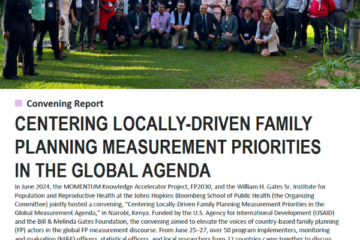
Stunting Limits Learning and Future Earnings of Children
(October 2012) In 1990, about 40 percent of children under age 5 worldwide were moderately or severely stunted by malnutrition, according to a recent report issued jointly by UNICEF, the World Health Organization (WHO), and the World Bank.1 By 2011, this share had decreased to 26 percent (see table). But stunting still affects more than one in four children worldwide, a total of 165 million children in 2011.
Percentage of Children Under Age 5 Affected by Stunting, 1990 and 2011
| Region | 1990 | 2011 |
|---|---|---|
| World | 40 | 26 |
| Asia | 48 | 27 |
| Central and Eastern Europe | 27 | 12 |
| Latin America/Caribbean | 22 | 12 |
| Middle East/North Africa | 31 | 20 |
| Sub-Saharan Africa | 42 | 36 |
Note: Moderate and severe stunting is defined as height for age below 2 standard deviations from the reference population median. See www.who/int/childgrowth/en/.
Source: United Nations Children’s Fund, World Health Organization, and World Bank, UNICEF-WHO-World Bank Joint Child Malnutrition Estimates (New York: UNICEF; Geneva: WHO; and Washington, DC: World Bank, 2012).
Children stunted by malnutrition are not only short for their ages but their bodies and brains can incur lasting damage. Research shows that stunted children are more susceptible to disease, tend to do poorly in school, and earn less as adults than their well-nourished peers.
Inadequate Nutrition Early in Life
Stunting results from nutritional deficiency during a child’s first 1,000 days, or from the beginning of pregnancy until approximately age 2. Stunted children are inches shorter than they would be under healthier circumstances, and can appear years younger. But short stature is just one symptom of a larger syndrome of malnutrition. Other consequences of stunting include a weakened immune system, impaired cognitive ability, and increased risk of obesity and elevated blood pressure. Studies also have found that stunted children have lower-than-average life expectancies.2
Some instances of stunting begin during pregnancy when the mother is improperly nourished. Women who are stunted, underweight, or fail to gain enough weight during pregnancy do not maintain the proper amounts of nutrients and are more likely to have a child with restricted growth. Stunting may also occur after birth as a result of poor diets, high infection rates, and insufficient feeding practices, all of which contribute to the inadequate intake of one or more micronutrients such as iron, zinc, or vitamins A, C, and D.3
Environmental factors such as poor sanitation and hygiene may also contribute to stunting. Children in unsanitary environments are at greater risk of exposure to germs and intestinal parasites, which disrupt nutrient absorption and weaken the immune system. Impaired immune activity, in turn, leaves them more vulnerable to recurrent infections and disease. In fact, stunted children are five times more likely than nonstunted children to die from diarrhea.4
Growth and Learning Ability Impaired
A growing body of research shows that stunting during the first two years of life has a negative impact on a child’s learning capacity later on. Chronically undernourished children are more apathetic and less curious than their healthy counterparts because their bodies devote their limited energy first to essential organ function, second to growth, and only third to social interaction and learning.5 Fatigue dampens their interest in their environment and in developing social relationships needed for developing motor skills and brain structure.6 Thus, stunted children take longer to reach developmental milestones, such as walking. Additionally, since stunted children appear younger, their caretakers are less likely to challenge them educationally, which diminishes their chances of catching up to healthier peers.7
The longer a child’s nutritional needs go unmet, the greater the likelihood of mental and physical impairments. This is particularly a problem in impoverished settings where stunting is more prevalent because poorer families often face limited access to adequate diets and health care over the long term.
School Achievement and Lifetime Earnings Reduced
For a variety of reasons, stunting is associated with lower school achievement. Recent studies have found that stunted children are more likely to begin school later than nonstunted children, possibly because stunted children seem less mature. In addition, they experience more frequent grade repetition and higher dropout rates.8 Undernourished children do not perform as well at school because they have greater difficulty concentrating and develop behavior problems more often. They also tend to have comparatively lower test scores. Furthermore, since stunted children are particularly susceptible to illness, they are more likely to be absent from school.
Lower levels of educational achievement are correlated to lower lifetime productivity and income, which makes breaking the cycle of poverty more challenging. For stunted individuals, estimates have shown as much as a 22 percent reduction in earning capacity.9
Malnutrition may also diminish productivity on the national scale by as much as 3 percent of gross domestic product, according to World Bank estimates. Nations also face indirect costs, such as greater health care expenses due to a population more susceptible to disease and special education services for children with developmental delays resulting from stunting.
Combating Stunting
Today, global efforts to combat malnutrition are on the upswing. For example, the Scaling Up Nutrition (SUN) movement brings together more than 100 organizations and 30 governments to help reduce malnutrition through educational campaigns, expanded nutrition programs, improved food production, and wider access to nutritious food.
With the SUN movement, the 1,000 Days partnership is working to draw greater attention to the importance of adequate nutrition in the 1,000-day window between the beginning of a woman’s pregnancy and her child’s second birthday. The partnership provides resources and advocacy tools to inform leaders about the importance, impact, and cost-effectiveness of investing in nutrition.
The good news is that stunting and other effects of malnutrition are preventable with key government investments, accurate information about maternal nutritional requirements, optimal child and family feeding practices, and sufficient care and hygiene. Senegal experienced reductions in stunting among children under age 5 after launching a large-scale, community-based program that included expanding and improving nutrition-related social services as well as cooperating with the private sector to fortify food with micronutrients. Working together, governments, donors, partners, and international organizations must remain vigilant, building on lessons learned to strengthen and expand nutrition programs to enable more children to live healthy and productive lives.
Kristen Devlin is a program assistant at the Population Reference Bureau.
References
- United Nations Children’s Fund, World Health Organization, and World Bank, UNICEF-WHO-World Bank Joint Child Malnutrition Estimates (New York: UNICEF; Geneva: WHO; and Washington, DC: World Bank, 2012).
- Francesco Branca and Marika Ferrari, “Impact of Micronutrient Deficiencies on Growth: The Stunting Syndrome,” Annals of Nutrition and Metabolism 46, no. 1 (2002): 8-17.
- Branca and Ferrari, “Impact of Micronutrient Deficiencies on Growth.”
- Anthony Lake, “Investing in Nutrition Security Is Key to Sustainable Development” (2012), accessed on July 11, 2012.
- Center on Hunger and Poverty and Nutrition, The Link Between Nutrition and Cognitive Development in Children (Medford, MA: Tufts University School of Nutrition, 1994).
- Cesar Vitora et al., “Maternal and Child Undernutrition: Consequences for Adult Health and Capital,” The Lancet 371, no. 9609 (2008): 340-57.
- Branca and Ferrari, “Impact of Micronutrient Deficiencies on Growth;” and Eugene M. Lewit and Nancy Kerrebrock, “Population-Based Growth Stunting,” The Future of Children: Children and Poverty 7, no. 2 (1997): 149-56.
- Vitora et al., “Maternal and Child Undernutrition.”
- Lake, “Investing in Nutrition Security Is Key to Sustainable Development”; and Branca and Ferrari, “Impact of Micronutrient Deficiencies on Growth.”






